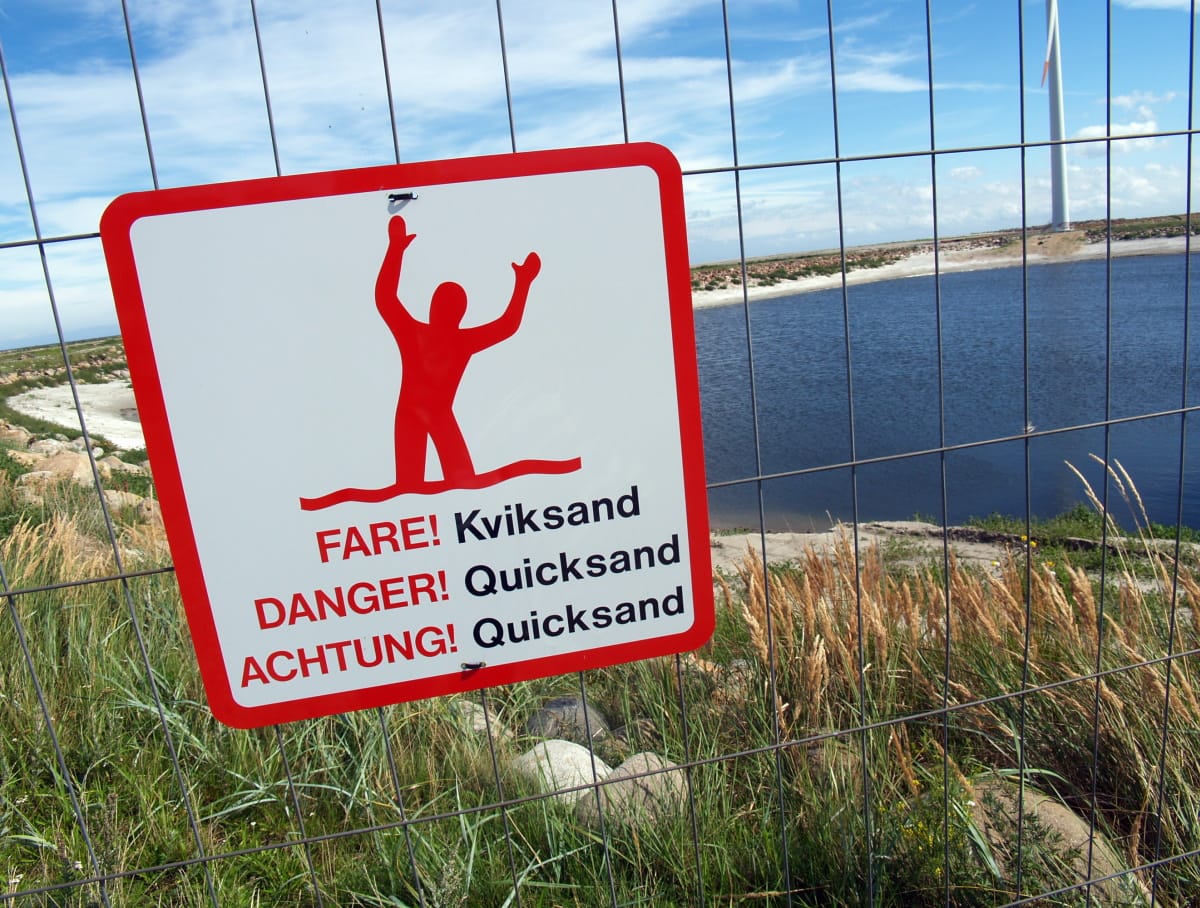Thanks to cinema and fiction, many of us from early childhood have an idea of how people are sucked by unsteady sands. We checked whether a person can literally drown in such a substance.
Undoubtedly, the main source of our impression of unsteady sands is works with a fictional plot. Such classics of literature as the topic of the death of people in this natural environment Bram Stoker And Wilki Collins. However, the real glory to the unsteady sand came with the advent of cinema. In 1998, the Internet user under the nickname Crypto Compiled “A guide to scenes with unsteady sands in the cinema and on television”, the latest version of which has already contained more than 1000 names of films - from 1909 to the present day. Your own Peak This topic reached in the 1960s, when in about every 35th film there was a scene with drowning in a similar substance. Nowadays, the frequency of such scenes has fallen by magnitude.
But periodically the news about incidents fatal outcome associated with unsteady sands come across to us in real life. Website "School of Life" It reports that in the naughty English of the Bay of Morkembbe, 150 people drowned in the English Bay for several years, and in 1692 an unenviable fate befell the whole city-the pirate capital of Port Royal on Yamaika.
First of all, it is necessary to understand what the unsteady sands are. Usually This natural formation consists of sand or clay and oversaturated salt moisture. Most often found in river deltes. A key sign of unsteady sands: their surface is firm, however, as soon as a person’s foot steps on it, the upper layer begins to dilute. After that, the wet sand, separated from the layer of water, is compacted, and it can already be easily stuck in it. The grains of sand due to humidity cannot withstand the weight of a person, and he really begins to link. But can a person drown in unsteady sands?
Once, during his trip to Iran, an employee of the University of Amsterdam Daniel Bonn met a tablet near the lake, warning tourists about the danger of unsteady sands. He took a sample of substance to the laboratory, measured the ratio of clay, salty water and sand in it, and then recreated experimental swellful sands on the basis of the obtained proportion. Of course, not living people participated in the experience, but aluminum bars, but their density corresponded to the density of the human body. Bonn placed the figures on the surface of the sand, and then began to swing, imitating the feverish movements of a person who is trying to get out on solid ground. As it turned out, the bars are not drowning. At first they were slightly immersed in the sand, but then, after mixing sand with water, they floated back to the surface. A similar fate in the continuation of the experiment was waiting for other objects with a similar density.
What then is the explanation of many deaths associated with unsteady sands? The point is primarily in the danger, which is fraught with the very presence in this position. As shown research Bonna and his colleagues, in order to free at least one leg, bogged down in the unsteady sands, it is necessary to attach the force of 10,000 Newtons - the same amount is required to raise the middle car into the air. During the time, while a person is trying to do this, he can cover him with a tidal wave (if it happens on the beach) or an avalanche of dry sand (if there is sandy slopes around).
The same study states that salt is an integral element of the unsteady sands, which provides the effect of “unsteadiness”. However, other scientists, from Switzerland and Brazil, in their work provedthat some similar natural formations do not contain salt. In this case, the illusion of solid soils can create special bacteria that form a crust. Nevertheless, such a quagmire is rarely deeper than human growth, and therefore most often not dangerous.
This myth was refuted in the popular show "Destroyers of legends"Where one of the hosts became a participant in the experiment, Adam. He plunged into the sand approximately on the chest and swam in a position as a float. The colleague even tried to “drown” him with the help of a pole, but failed.
What to do to a person who falls into the unsteady sands? There are many useful videos on this topic:
Usually they recommend the following actions.
1. Try to move your legs binded in the sand so that a half -liquid mass forms around them.
2. Lean your back to the surface, spreading your body and reducing the pressure on every square centimeter of the soil.
3. If there is no one to help at this moment, try to “swim” along the sand back to the hard surface, using the swimming technique on the back.
As for the main question that interests us, the answer to it has already been obtained: as a rule, in good health and without “help” other factors, drowning in a real whisk of sand is quite difficult.
The image on the cover: Wikipedia.
Most of the untruth
Read on the topic:
1. Can a person drown in unsteady sands?
2. Quicksand Canm You Under
If you find a spelling or grammatical error, please inform us of this, highlighting the text with an error and by pressing Ctrl+Enter.






